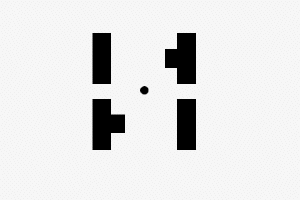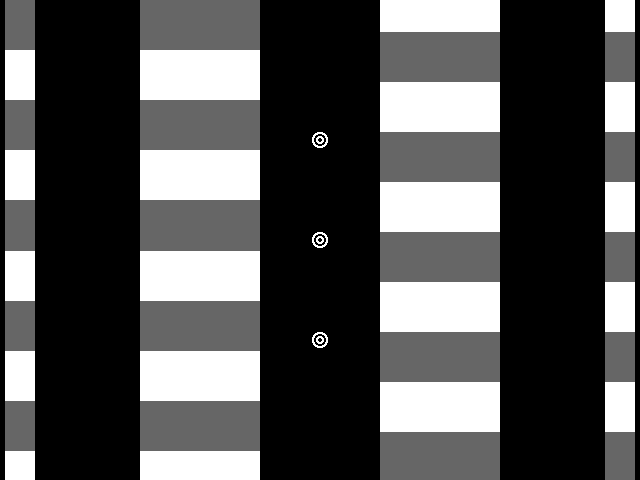Flash Drag Effect
Keep your eyes on the cross in the center. Where do you see the red and blue flashes?
Actually, they are always in the same positions, vertically aligned at 12 and 6 o'clock!
Video by Anna Kosovichva, based on Cavanagh & Anstis (2013, http://dx.doi.org/10.1016/j.visres.20...), Anstis & Cavanagh (2011, http://www.journalofvision.org/conten...).
Also see Whitney & Cavanagh (2000, http://dx.doi.org/10.1038/78878),
Tse et al. (2011, http://www.journalofvision.org/conten...),
Kosovicheva et al. (2012, http://www.journalofvision.org/conten...),
Maus et al. (2013, http://dx.doi.org/10.1016/j.neuron.20...)
Motion Distortion Demonstrations

Fixate on the dot at the center of the display and notice that the two horizontal bars appear to move in opposite directions. This is the transformational apparent motion illusion. There is no physical motion in the display--the illusion is entirely due to attention. After noticing the opposing directions of motion in the top and bottom of the display, notice the two brief flashes. The flashes are physically aligned, but appear misaligned--each one appearing shifted in the direction of the nearest motion. The illusion demonstrates that top-down motion mechanisms influence perceived location.

From Whitney (2002). The display shows two pairs of linear gratings that translate in opposite directions. Try fixating on the center fixation point (center of the image, though any of the three fixation points will work). Notice that there are two briefly presented flashed lines near the top of the image that straddle the gratings. Most people (>90%, hundreds have observed at conferences) perceive the flashes misaligned: the right flash appears below the left flash. Also notice the two flashed lines toward the bottom of the image. Most people report that the flash on the right is above the flash on the left. Both pairs of flashes are actually physically aligned. You might also try fixating on the upper or lower fixation points, which are in fact precisely aligned with the two pairs of flashes, respectively.
The flashes always appear misaligned in a direction consistent with the nearest direction of motion. Yet, all of the flashes are physically separated from the motion and are stationary (both perceptually and physically). In several experiments, we established that motion over 50 degrees away from stationary flashes cause the flashes to appear displaced in position. To explain this phenomenon, we have suggested that motion signals distort the representation of visual space. Before positions are assigned to stimuli, motion is integrated over large areas of the visual field and directly influences the position coding of the stimuli. This may explain why motion shifts the positions of both stationary and moving stimuli.
